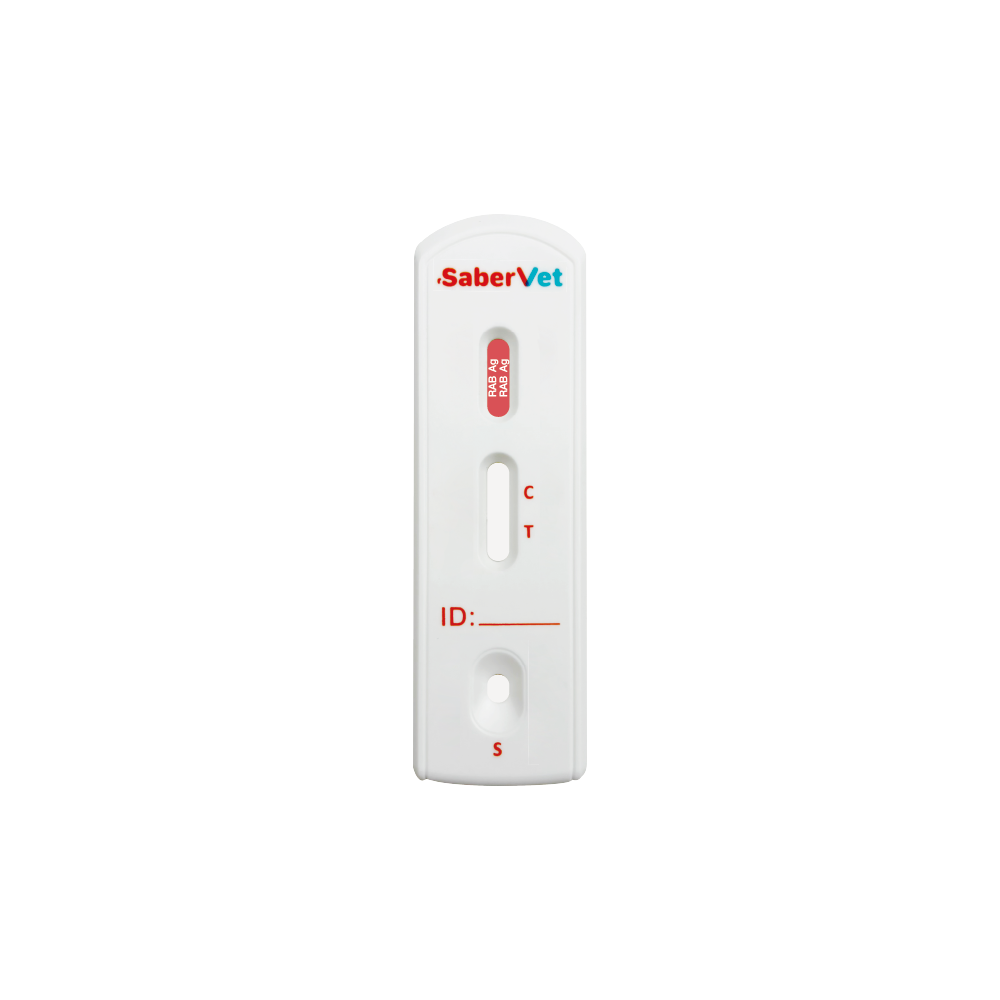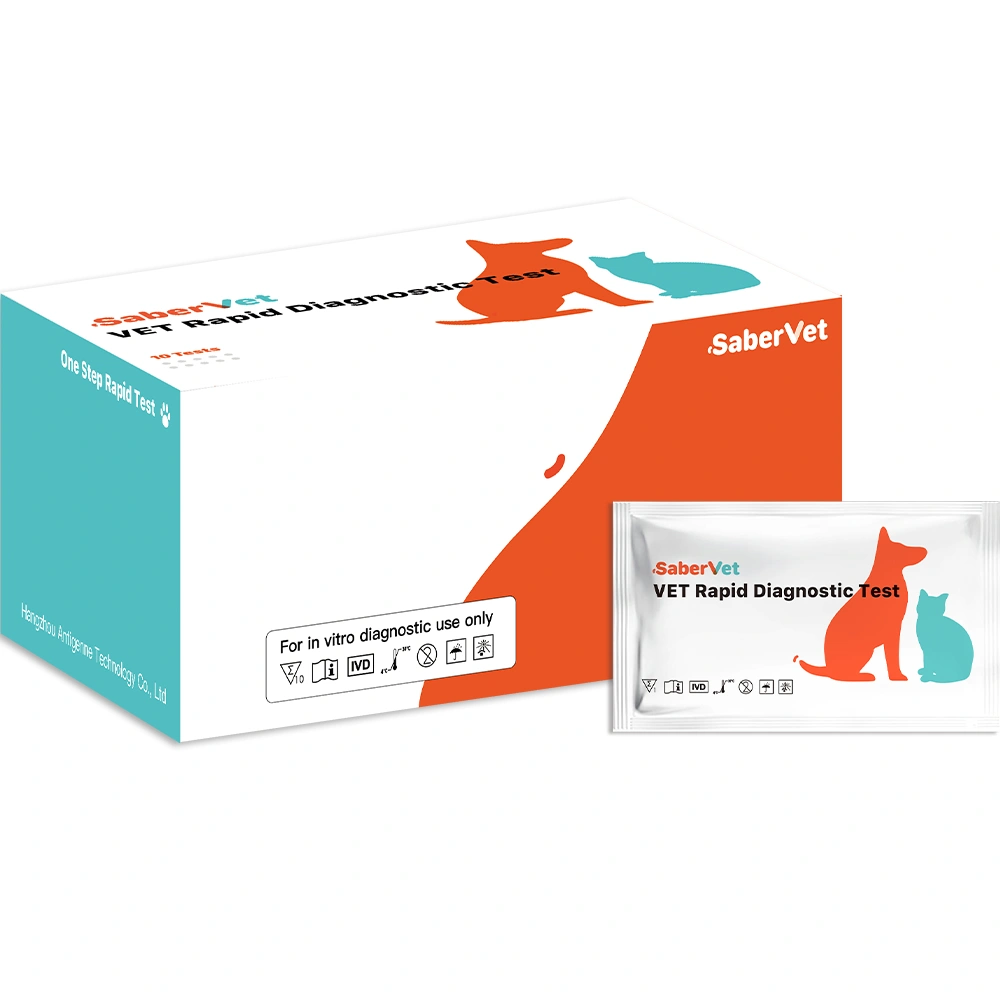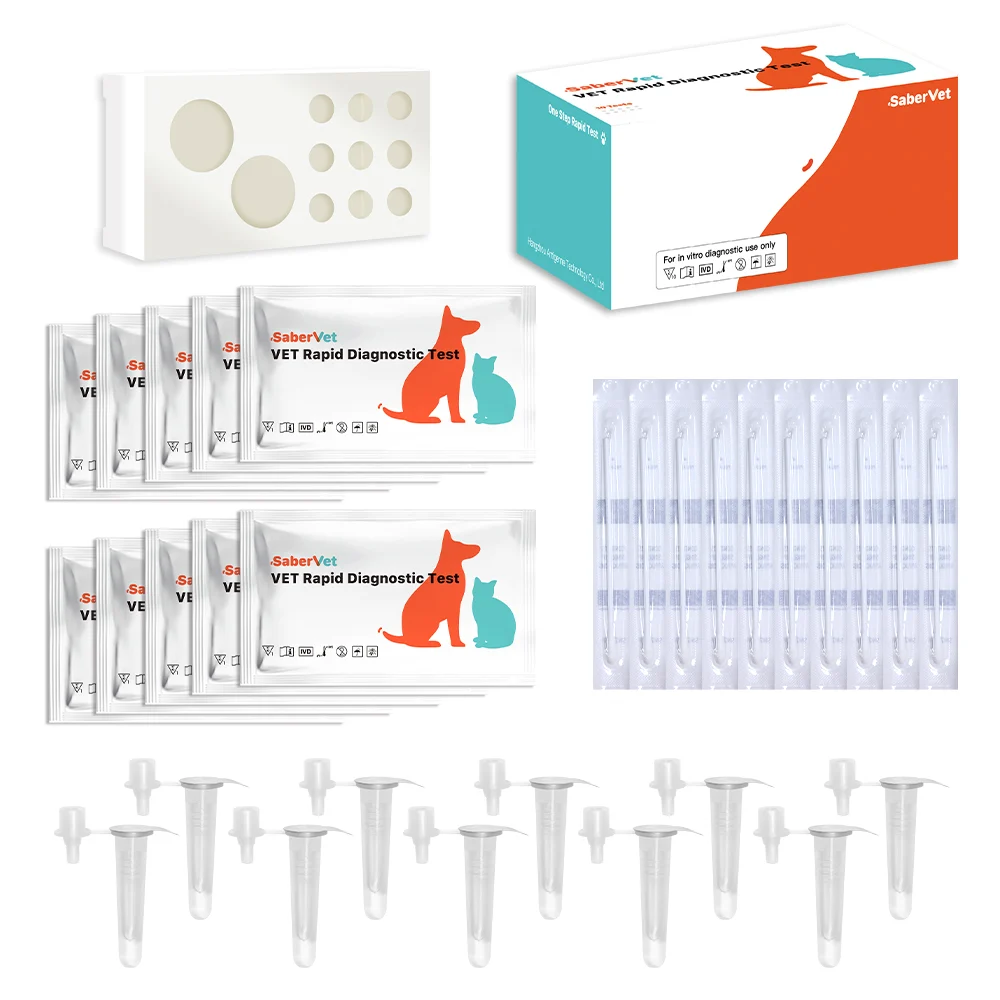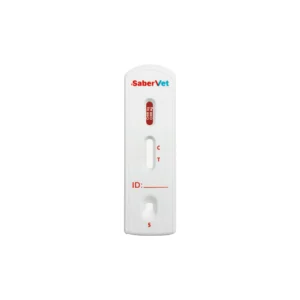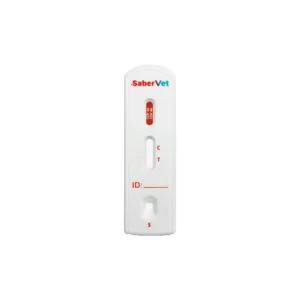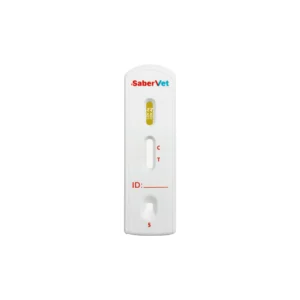Description
Contenu
| Composante | 10T/Boîte |
| Dispositif de test | 10 pièces |
| Ecouvillon | 10 pièces |
| Tampon | 10 pièces |
Spécifications
| Nom du produit | SaberVet Rabies Antigen Rapid Test |
| Nom de la marque | Sabervet |
| Numéro de modèle | 1091182410 |
| Spécimen | Sécrétions |
| Application | Diagnostic vétérinaire |
| Sensibilité | 99.80% |
| Spécificité | 97.69% |
| Certificat | GMP & ISO9001 & CE |
| Durée de l'essai | 10 minutes |
| OEM&ODM | Disponible |
| Durée de conservation | 3 Years |
Fonctionnement
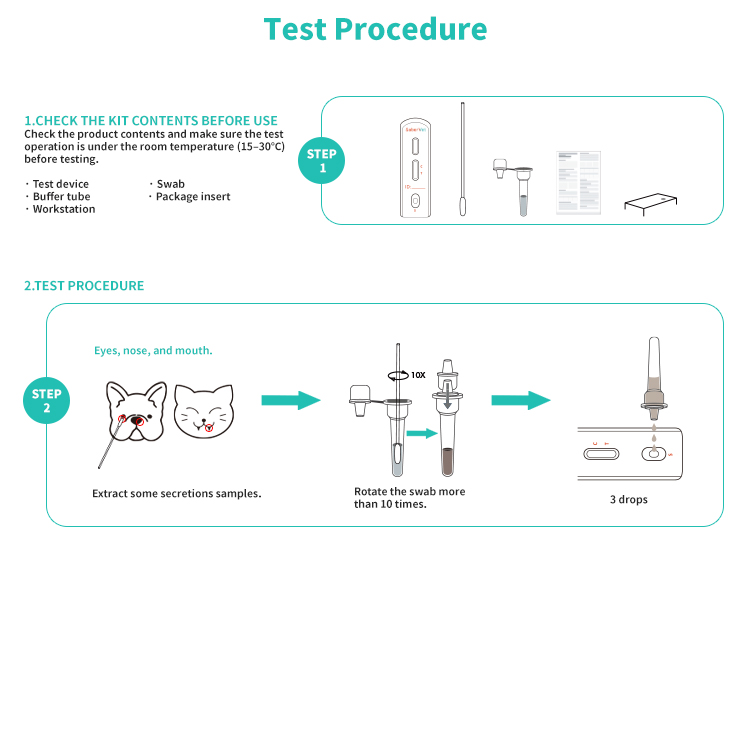
Résultats
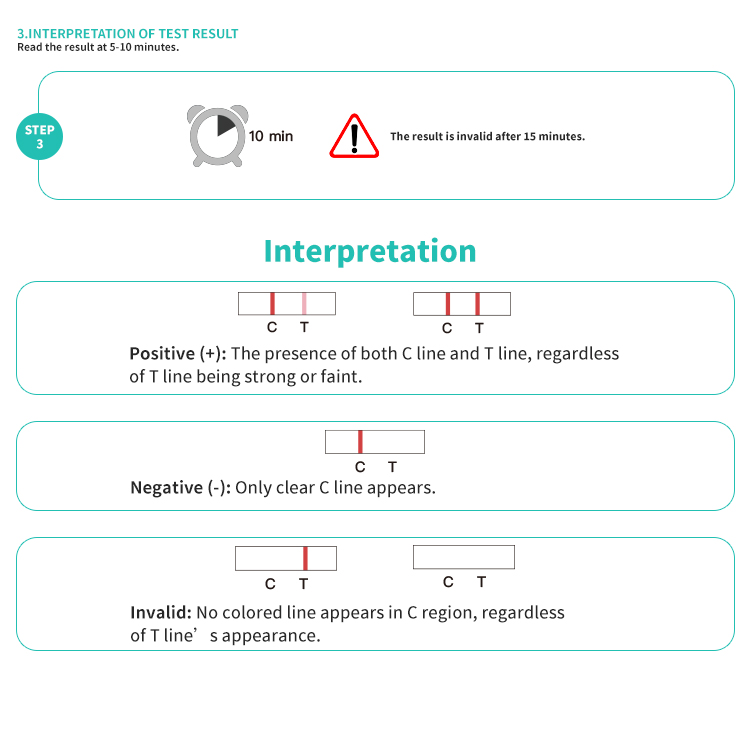
Le virus de la rage appartient à la famille des elastoviridae, du genre Rabies virus. Les particules virales ont une forme élastique, un diamètre d'environ 75 nm et sont encapsulées dans une capsule sous la forme d'un virus à ARN. L'infection par le virus de la rage provoque la rage.
Symptômes cliniques de la rage
La rage, également connue sous le nom d'hydrophobie, est une zoonose virulente causée par le virus de la rage, qui présente un large éventail d'infections ; l'homme et divers mammifères à sang chaud sont susceptibles d'être infectés. En présence de signes neurologiques cliniques, la mort survient dans près de 100% des cas.
Dogs with rabies disease will show a more specific expression of terror and squinting, especially when attacked again by external stimuli. In the late stage of rabies, the patient's consciousness gradually disappears, the body will gradually lose weight, will show fear of water, dyspnoea, jaw droop and other characteristics, and there is a wild biting behaviour, and finally will be due to respiratory distress leading to central failure or paralysis and death.
Les personnes atteintes de la rage présentent d'abord une manie, une peur de l'eau, une transpiration excessive, des larmes, un pouls rapide, de la fièvre, des pupilles dilatées, des difficultés respiratoires, une perte de contrôle de soi, etc. et, plus tard, une défaillance du système nerveux central, une paralysie, un coma ou la mort.
Transmission of Rabies
Traumatic contact transmission
If scratched or bitten by rabid animals or suspected rabid animals, or contacted with rabies virus-carrying animals and their saliva or blood in the broken skin or mucous membrane, rabies virus can enter into the body through the broken place, and the traumatic contact transmission is the more common way of transmission.
Respiratory transmission
Aerosols of rabies virus may be found in the burrows of rabies virus-carrying animals. If inhaled after entering a burrow, rabies virus can be transmitted through the respiratory tract.
Transmission par voie digestive : La consommation d'aliments infectés par la rage, tels que la viande et ses produits dérivés provenant d'animaux malades, peut également entraîner la transmission de la rage.
Clinical diagnosis of Rabies
Isolement et culture du virus : Le tissu cérébral frais est prélevé sur les animaux malades après leur mort, et le liquide tissulaire est injecté à des souris allaitantes ou inoculé à des tissus cellulaires pour la culture et l'amplification, et les particules virales sont détectées à l'aide de la technologie d'immunofluorescence. Cette méthode permet de confirmer le diagnostic des animaux morts suspectés d'être infectés.
Technique des anticorps fluorescents : La technique des anticorps fluorescents (FAT) fait référence à l'utilisation de la coloration par anticorps fluorescents de coupes de tissu cérébral fixées dans un fixateur à base d'acétone pour déterminer la présence de particules virales ou d'inclusions virales dans les coupes de tissu cérébral par microscopie à fluorescence.
Direct Fluorescent Antibody
Direct Fluorescent Antibody (DFA) is the "gold standard" for laboratory diagnosis of rabies and is accredited by the World Organisation for Animal Health (OIE). The method involves fixing brain tissue slices from suspected diseased animals and binding them with fluorescein isothiocyanate (FITC)-labelled monoclonal antibodies to the rabies virus, which can be directly observed by fluorescence microscopy to determine the viral particles.
Rapid immunohistochemistry
Rapid immunohistochemistry (dRIT) is mainly used for the qualitative detection of rabies. The method mainly collects brain tissue samples from suspected diseased animals, and after specific binding with specific rabies virus monoclonal antibody, after staining, the presence of virus particles can be directly observed under the light microscope to determine whether rabies is infected or not.
Enzyme-linked immunosorbent assay
Enzyme-linked immunosorbent assay (ELISA) makes use of the principle of specific binding of antigen and antibody to determine the negativity and positivity of the pathogen by observing the degree of colour reaction.
Nucleic acid detection technology
Nucleic acid detection of rabies virus usually adopts RT-PCR technology to amplify the target gene fragment, and judgement is made according to the amplification results.
Test rapide de détection des anticorps de la rage
Antigenne a mis au point un test rapide de détection des anticorps antirabiques pour les échantillons de salive/liquide céphalorachidien, qui peut être utilisé comme un moyen efficace pour les utilisateurs de surveiller le virus de la rage.
